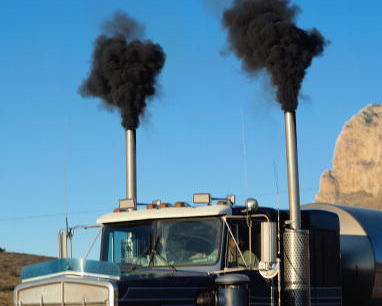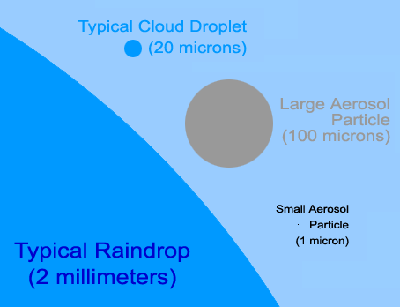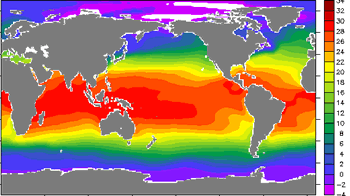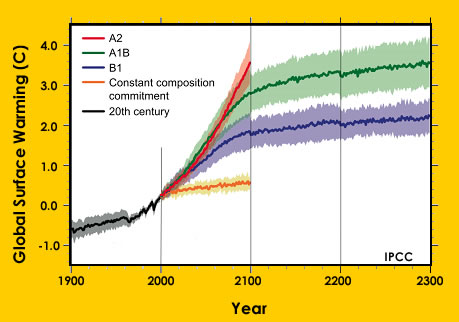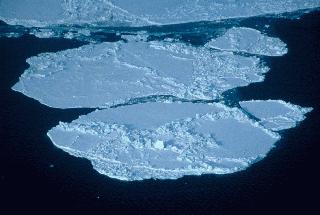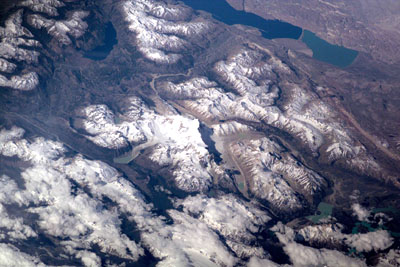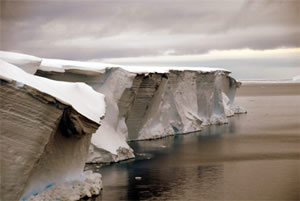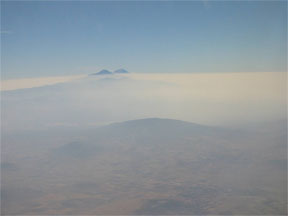Click on image for full size
Courtesy of U.S. Environmental Protection Agency
Black Carbon
Little particles in the atmosphere called aerosols may be small but they have the ability to change climate. These tiny particles are a natural part of the atmosphere, coming from erupting volcanoes, sea salt, and wildfires. Since the start of the Industrial Revolution, additional aerosols have been added to the atmosphere as fossil fuels have been burned. Black carbon is the term that has been given to the product of the incomplete combustion of fossil fuels, biofuel, and biomass. It is commonly known as soot.
Black carbon stays in the atmosphere for several days to weeks and then settles out onto the ground. Sources of black carbon are open biomass burning (forests and savannah burning that can start from natural causes like lightning or human-induced causes like slash and burn methods for clearing land), biofuel burning, diesel engines, industrial processes and residential coal burning. Black carbon is produced around the world and the type of soot emissions vary by region.
Black carbon contributes to global warming in two ways. First, when soot enters the atmosphere, it absorbs sunlight and generates heat, warming the air. Secondly, when soot is deposited on snow and ice, it changes the albedo of that surface, absorbing sunlight and generating heat. This warming causes snow and ice to melt, and darker colored Earth surface and ocean are exposed and less solar energy is reflected out to space causing even more warming. This is known as the ice-albedo feedback.
Just what is albedo? The amount of energy reflected by a surface is called albedo. Albedo is measured on a scale from zero to one (or sometimes as a percent).
- Very dark colors have an albedo close to zero (or close to 0%).
- Very light colors have an albedo close to one (or close to 100%).
Because much of the land surface and oceans on Earth are dark in color, they have a lower albedo and absorb a large amount of the solar energy that gets to them, reflecting only a small fraction of the Sun's energy. Forests have low albedo, near 0.15. Snow and ice, on the other hand, are very light in color. They have very high albedo, as high as 0.8 or 0.9, so they reflect most of the solar energy that gets to them, absorbing very little.
The amount and type of aerosols in the atmosphere has an impact on the albedo of our planet. Earth's planetary albedo is about 0.31. That means that about a third of the solar radiation that gets to Earth is reflected out to space and about two thirds is absorbed. Aerosols like black carbon have a low albedo and reflect very little solar energy. This air pollution is having an impact on Earth's climate.
Scientists Ramanathan and Carmichael estimate that black carbon emissions are the second largest contributor to global warming, after carbon dioxide emissions. Reducing black carbon emissions is one of the fastest strategies for slowing global warming. Luckily, many policies have been put in place to reduce the production of black carbon around the world, and the technology necessary to lessen black carbon emissions already exists. To improve further, we need to better regulate the industrial processes that produce black carbon, and individuals need affordable and available technology to be able to make shifts from practices like biofuel cooking and residential coal combustion that are still used in much of the world today. The importance of black carbon's role in global warming has come to the forefront of the minds of many concerned citizens and exciting steps are already being taken to address issues like making cleaner burning cookstoves available in developing nations. These reductions of black carbon around the world will not only aid in reducing global warming, but will improve human health and environmental aesthetics.


